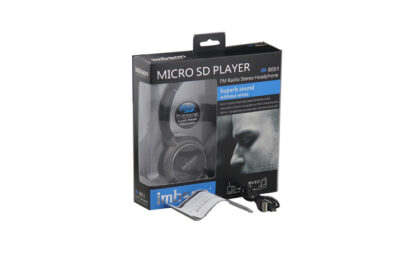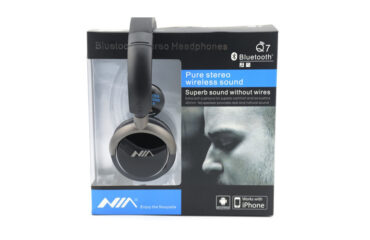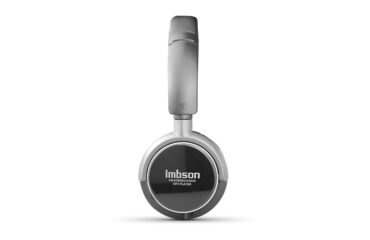
Circumaural: This type of headphone can be closed or open-backed. The term circumaural refers to how it cups your ear. Circumaural models are sometimes referred to as “over the ear headphones” Their padding encircles the ear and forms a seal. These headphones are usually comfortable, and closed-back models provide isolation from external sounds and keep the headphone sounds from leaking out. A circumaural design is a good choice for recording applications and for DJs who need to monitor music in loud environments.
Open air: Also referred to as open-back headphones, they can be either circumaural or supra-aural, but the back of each earpiece is open, allowing sound to escape freely in both directions. Because they are non-isolating, they are not a good choice for recording studio applications. If used by a singer, for example, the headphone sound can leak and be picked up by the microphone influencing the final recording. Their positive quality is an open, airy sound that isn’t fatiguing to the ears, which makes them a good choice for general listening.
Semi-open: This type of headphone, as the name suggests, falls between a fully open design and a closed-back design. While some sound leakage can occur, there is less than with an open-back design. Semi-open headphones usually offer a realistic stereo field, low distortion, and extended low-frequency response. They are often used for recording where there are no open microphones to pick up sound leaking from them.
Closed or sealed: This type offers the greatest sound isolation. The backs of the earpieces are completely closed, which, along with an effective seal around the ear, prevents sound from passing in either direction. This design is especially good for monitoring in loud environments, and for use in recording because they keep sound from leaking out and being picked up by microphones. They also tend to have strong bass response, so DJs mixing dance music prefer them. On the downside, they can cause ear fatigue when used for extended periods.
Studio headphone packages: Equipping a home or project studio with enough headphones to record a full band can involve a considerable investment. In most cases a headphone amplifier will also be needed to amplify and distribute the mix signal to each musician. Working with pro audio headphone manufacturers, Musician’s Friend has assembled a collection of headphone packages that bundle multiple headphones with a headphone amplifier. These packages offer significant savings compared to the cost of the individual components.
Portable headphones: These are the open-air, lightweight, headphones usually equipped with foam earpads and used with portable players. Often the ones that come with players are cheap and you may want to replace them with better quality headphones of a similar kind. They are light which makes them ideal for active use, and the better ones can sound fantastic. Because they allow you to hear external sounds such as that runaway garbage truck bearing down on you, they are suited for use when hearing what’s going on around you is important.
Earbuds: Earbud headphones offer the ultimate in portability and light weight. They fit into the ear and form a seal that isolates the sound so that only you hear it. Better-quality earbud-type headphones offer excellent sound quality, which is remarkable considering their small drivers. However, bass response can be weak in some designs, especially those that fit your ear canal poorly. A few models have interchangeable tips to provide a better fit in the ear canal.
Noise-canceling headphones and earbuds: As many commuters know, listening to music while traveling by car, train, or airplane is made difficult by the general level of background noise. For critical listeners, this can be frustrating because it blurs the nuances of the music. Noise-canceling headphones are designed to remove the background noise. They do this by means of phase-canceling technology. Some models incorporate Bluetooth technology for cable-free convenience plus connectivity with computers and smartphones.
Wireless headphones: The advantage of having no cable is obvious: you’re free to roam as you listen. They operate on three basic types of technology: infrared, RF, and various digital technologies including Bluetooth. Infrared models have a shorter reception distance and require line-of-sight orientation to the base unit transmitter. They also typically offer the lowest signal quality. RF models transmit further and will work through walls, but noise and sound quality can be issues. Digital wireless converts signals to a digitally encoded signal, then the headphones convert it back to analog. This type is more noise-free than infrared and RF, but more expensive. They also require power for the transmitter and battery power for the headphones.
DJ headphones: There are quite a number of headphones intended for DJ use. These are usually circumaural closed-back headphones designed for isolation. Many are standard two-cup headphones, but DJs also use single-sided headphones with just one cup. This allows them to hear their mix and the room simultaneously. Typically DJ headphones are louder so they can be heard over high ambient sound levels. Many have rotating earcups for comfort and detachable, replaceable cords. Generally DJ headphones are built ruggedly to handle the wear and tear of heavy use and travel.



